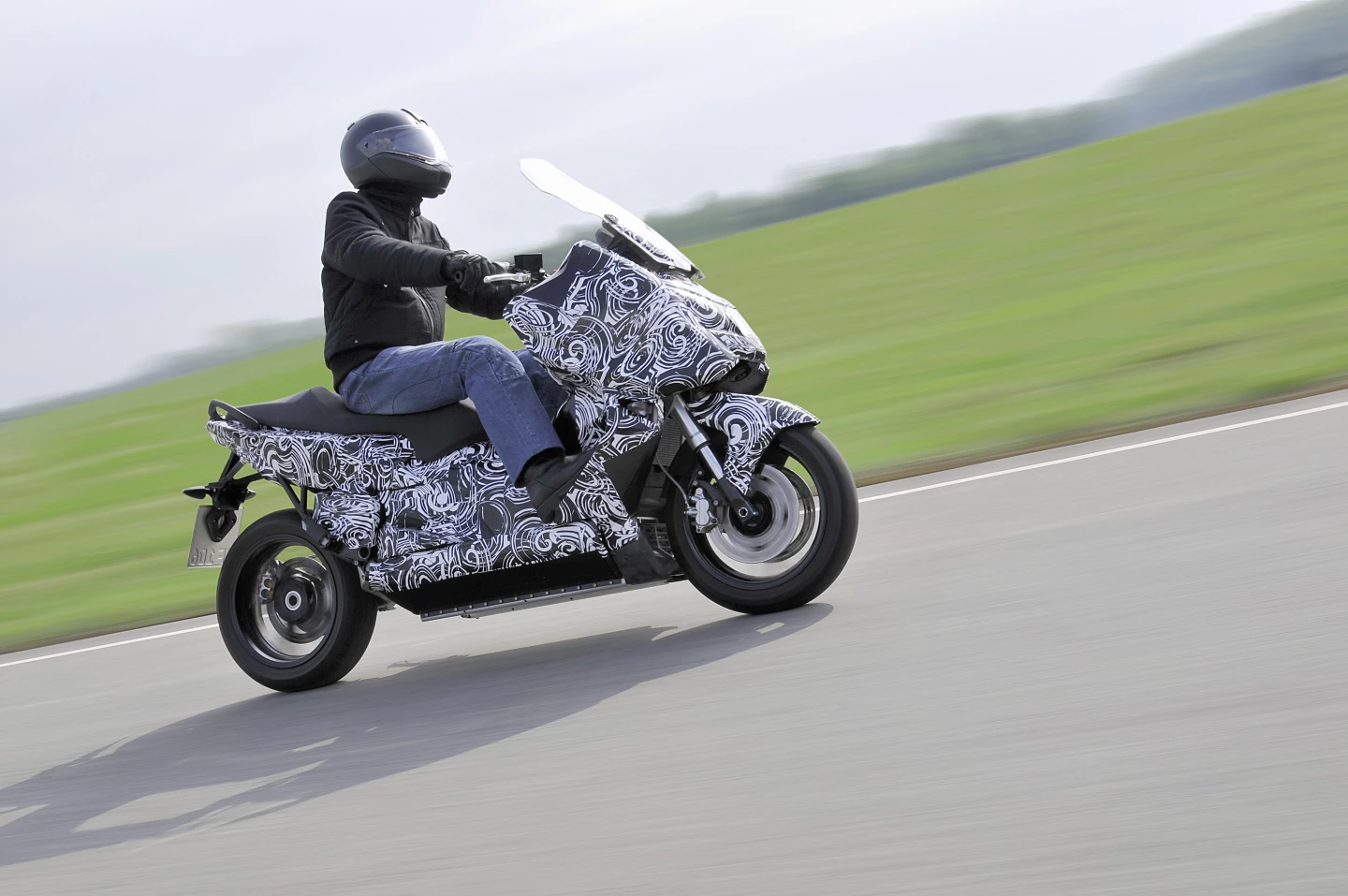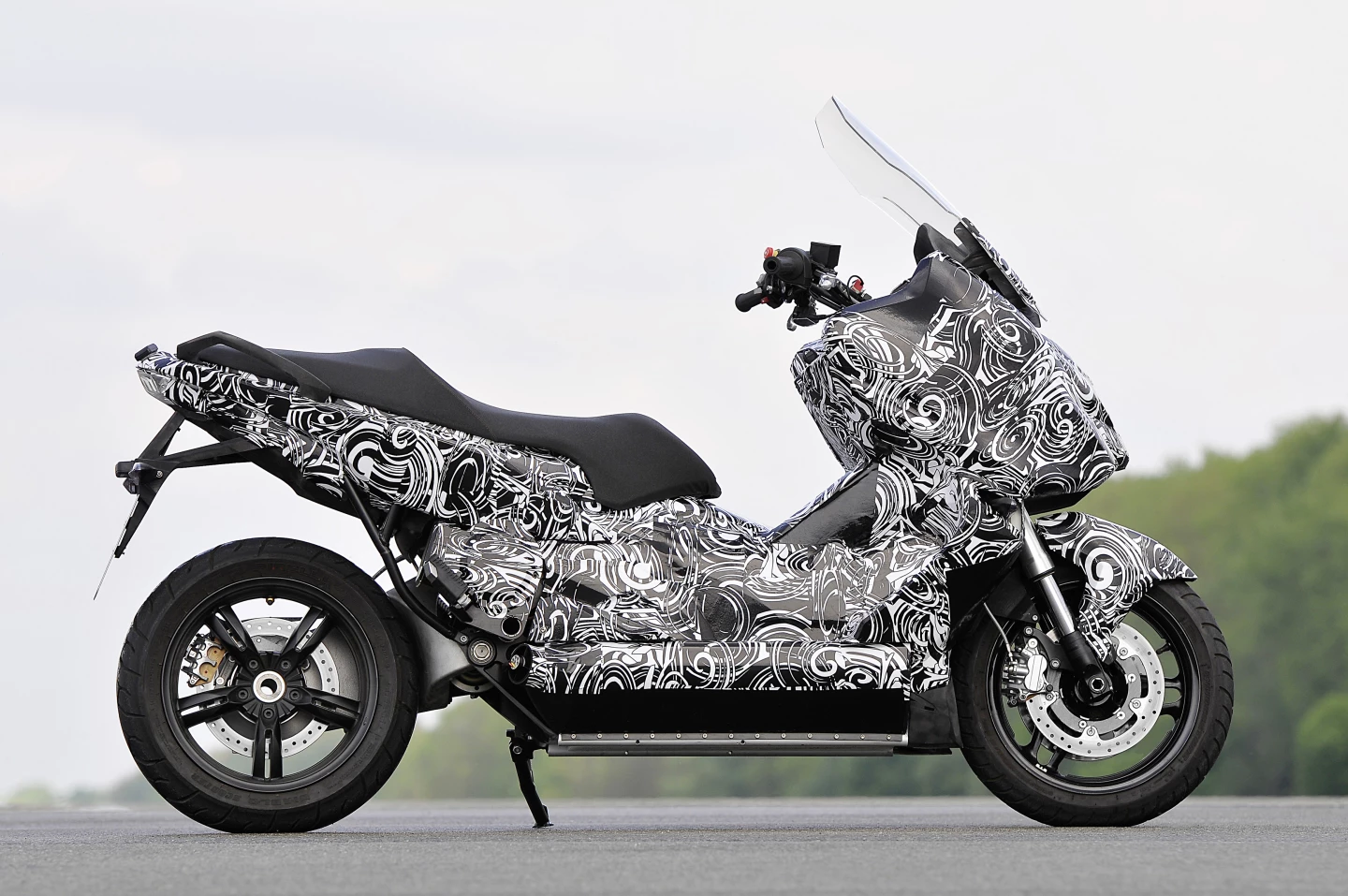BMW has flagged a possible intention to get into the electric motorcycle market with the airing of its E-Scooter concept bike. Designed from the ground up as an electric bike, the E-scooter uses its battery casing as a primary component of the frame. With a regenerative braking system built in and a full charge from a conventional power socket taking less than three hours, the E-Scooter is capable of over 100 km (62 miles) per charge, and easily makes freeway speeds.
Don't be put off buy the odd paint job on this concept bike - that's the standard camouflage BMW and many other manufacturers use to conceal the final body shape of concept and pre-production test vehicles.
Under the skin, the E-Scooter looks to be a reasonably well designed but unremarkable electric maxi-scooter reminiscent of the Vectrix that more or less pioneered decent-sized electric motorcycles in the western world. It's worth noting that in certain parts of Asia, electrics are almost as common as petrol scooters, but they travel at lower speeds and have shorter ranges than would be appealing to the U.S. market.

So what's changed since the Vectrix? Not an awful lot, on the surface of it. Vectrix chose a hub-mounted drive motor, BMW uses a chain drive and a motor that's built into the battery pack. Presumably BMW will be using Lithium based batteries as opposed to the Vectrix's old-school NiMH powerpack.
Range and top speed more or less match the Vectrix - the BMW will do more than 100 km/h (62 mph) and will travel more than 100 km (62 miles) on a charge if you go gentle on the throttle. But our recent experience testing the Zero Electric Supermoto taught us exactly how much of a difference your riding style can make to a modern electric's range figures. Pootle it around at 50 km/h (can you actually pootle an electric?) and it feels like the battery will last forever. Sit at 100 km/h on a freeway and it's quite terrifying to watch as the battery bars disappear before your very eyes.
Regenerative braking will help keep a little more juice in the battery as you ride, but in general, as with most electrics, you plug the E-Scooter into the wall to charge it. A full charge from empty is over in about three hours, but you'll rarely run it all the way to empty.

BMW has chosen a combination of liquid and air cooling to keep the motor, battery and electrics from overheating, and there's more or less no frame to speak of. The battery box supports the seat, headstock and swingarm as part of its design.
The E-Scooter project looks like it's been more or less put together to get a hold of some grant funding from the German government. Having achieved that goal, it'll be interesting to see if BMW believes strongly enough in the segment and the vehicle itself to put it out onto the market in its current form.













